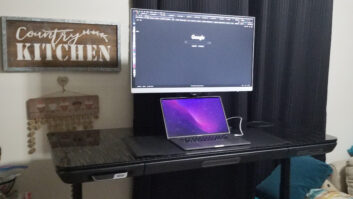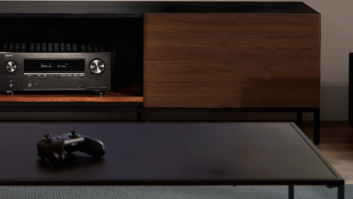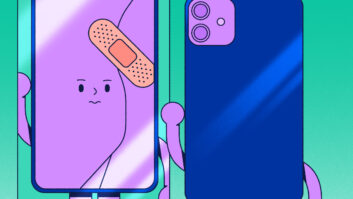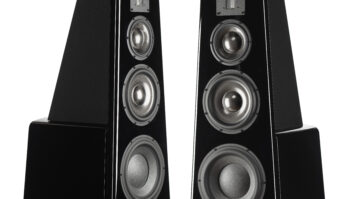MedWand, a real-life version of the Star Trek tricorder, and the Ambassador ear pad language translator from Waverly Labs were co-winners of the 20th annual Last Gadget Standing competition Thursday morning. It is the first time in the event’s history there was a tie.
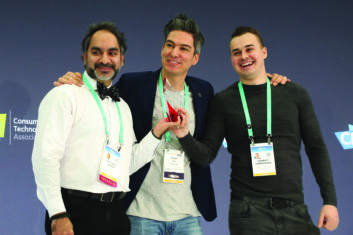
Combining 10 different medical devices including into a single, rounded palm-sized device, MedWand is a portable diagnostic tool that enables telemedical consultations with doctors from a smartphone, tablet, or PC, from anywhere on the planet with an internet connection—“a doctors without borders in your hand,” according to the company’s CEO, Dr. Samir Qamar.
Packed inside the MedWand, due to be available mid-year pending FDA Class 2 medical device certification for $349, is a stethoscope, an otoscope for ear exams, an ophthalmoscope for eye exams, a dermatoscope for skins exams, a throat illuminator, a pulse odometer to measure heart respiratory rates, a thermometer you wave over your forehead, and an EKG.
The Ambassador live interpreter consists of a hooked ear pad with two mics. Along with an app, Ambassador can translate 20 languages in listening, lecture, or conversation mode. In the latter, each conversationalist dons an ear pad, speaks, and the app translates in both text and synthesized speech. Up to four ear pads can be connected to the app for a group conversation. Translations are done in the cloud, so the phone requires an internet connection—even if it’s just 3G.
Translator Ambassador will be available in the spring for $199, with no membership or subscription necessary.
The other eight Last Gadget Standing contestants were:
- WowCube, a Rubik’s Cube-like twisty gaming block with four blocks with four screens per side ($249, mid-year).
- ClearUP, a handheld device you rub against your cheek that uses micro currents to clear up sinus issues in around 10 minutes ($149).
- Flic 2, the second-generation of the single-action smart buttons now with action identification labels and a hub to host up to 64 buttons ($99 for four Flics, $169 with a hub).
- Orbi WiFi 6 Mesh system.
- Octobo, a plush octopus toy/robot powered by a tablet (not included) slipped inside ($149).
- Phyn Bluetooth+sensor smart water assistant that can detect water leaks and potential freezes, and tracks all household water usage via its app ($299).
- Lioness second-generation “orgasm optimizer” vibrator with AI-guided feedback via its app.
- Doodlematic, a mobile game generator that can create games via simple colored drawings on a near-white background ($29.99).
Young Innovators to Watch
Also honored at the event were four Young Innovators to Watch, a competition sponsored by Lenovo, BizWorld, wrethink, and Hamelin. These teen geniuses, each of whom received a $1,000 prize, are:
- Sage Khanuja and Nikolas Ioannou, both 16, from the University of Washington, who created Spira, a $15 biomedical device that provides screening for respiratory diseases
- Alishba Imran, 16, from Mississauga, AZ, who developed Honestblocks, a blockchain platform to track medication in the supply chain to mitigate the scourge of counterfeit medication
- Sofia Ongele, 19, from Santa Clarita, CA, who built ReDawn, a mobile app to put power into the hands of survivors of sexual violence
- Stanley Lui, 16, who developed the Immunoessence Chip, a microfluidic device for integrated plasma separation and sensitive multiplex biomarker detection.
For more CES 2020 news and stories, visit twice.com/tag/ces-2020.




